14 Childhood Chores Every ’60s Kid Did That Would Shock Modern-Day Parents
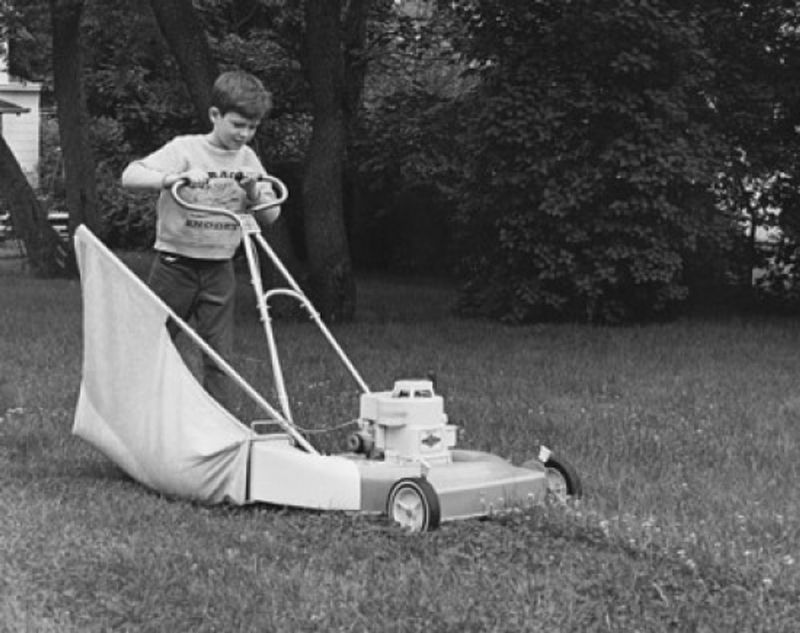
Long before smartphones, chore charts, or Roombas, childhood meant real responsibility—sometimes with a side of elbow grease. For kids growing up in the 1960s, daily life included a list of household duties that today’s parents might consider outrageous, if not downright unsafe. From scrubbing floors on their knees to tending fire ashes and defrosting freezers by hand, these weren’t optional tasks—they were part of growing up. While modern conveniences have made life easier, they’ve also made some of these routines feel unthinkable. Here are 14 everyday chores ’60s kids tackled without complaint—and why they’d absolutely shock parents today.
1. Mowing the Lawn—with a Blade-Only Push Mower
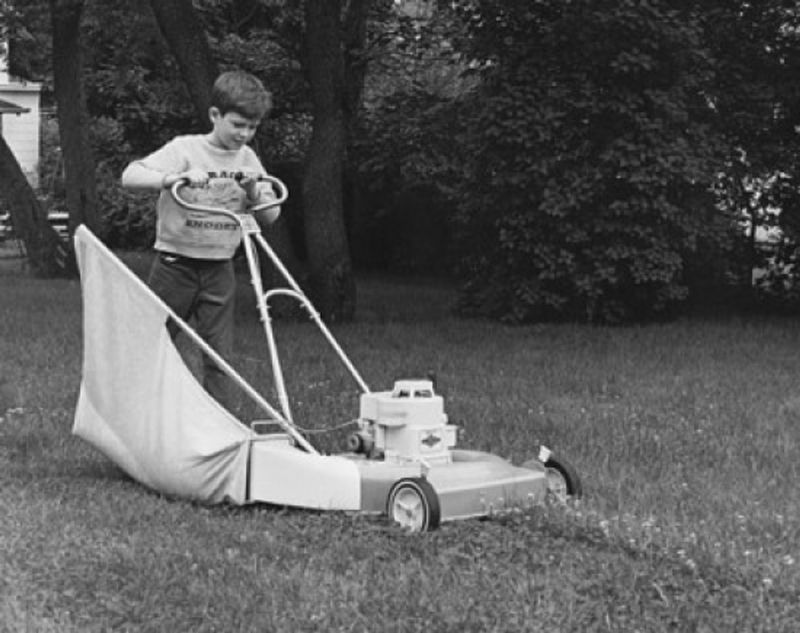
Saturday mornings often meant wrestling with a heavy reel mower across uneven lawns. The metal contraption had no motor—just sharp spinning blades powered entirely by kid muscle. Many children as young as eight tackled this weekly chore, pushing with all their might to keep the blades turning fast enough to actually cut grass.
The struggle was real when hitting a patch of thick or wet grass, requiring a running start to build momentum. Parents rarely worried about the dangerous blades or the physical strain on growing bodies. The reward? Neatly trimmed grass and arms that ached for days afterward.
2. Burning the Trash in the Backyard
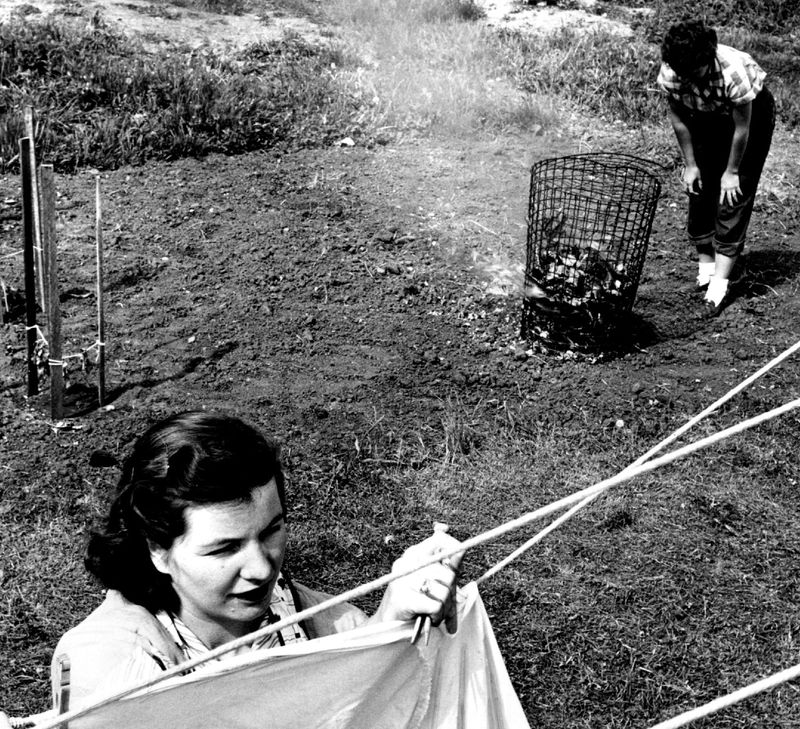
Before recycling bins and weekly garbage pickup became standard, families disposed of their trash the old-fashioned way—they burned it. Children often handled this smoky responsibility, tossing paper, cardboard, and even plastic into metal barrels or brick-lined pits in the backyard.
Kids managed the flames with garden hoses nearby, breathing in toxic fumes while poking at the fire with sticks to keep it going. The most fascinating part? Parents considered this completely normal and rarely supervised this potentially dangerous activity. Neighborhood air would fill with the distinct smell of burning refuse every weekend.
3. Hanging Laundry on the Line

Automatic dryers were luxuries many families couldn’t afford in the ’60s. Rain or shine, hot or freezing, laundry day meant children hauling heavy baskets of wet clothes to backyard clotheslines. Little hands struggled with wooden clothespins while standing on tiptoes to reach the lines.
Winter brought its own special challenge—frozen fingers and clothes that turned stiff as boards in the cold air. Summer wasn’t much better with bees buzzing around sweet-smelling sheets. The real test came when dark clouds appeared and everyone raced to unpin dozens of items before the downpour, a mad scramble that often ended with partially-wet laundry anyway.
4. Ironing the Family’s Clothes

That heavy metal iron wasn’t just for mom—kids as young as ten regularly pressed everything from dad’s work shirts to bed sheets. These weren’t today’s lightweight irons with automatic shut-offs either, but heavy metal contraptions that could easily burn a house down if forgotten.
Children learned to test iron temperature with a wet finger (sizzle meant ready!) and mastered the art of pressing without scorching. Girls especially spent hours standing at ironing boards, carefully working out wrinkles from every family member’s wardrobe.
The most dreaded items? Dad’s cotton handkerchiefs and dress shirts with their complicated collars and cuffs that required perfect creases.
5. Cleaning Out the Ashes from the Fireplace or Wood Stove
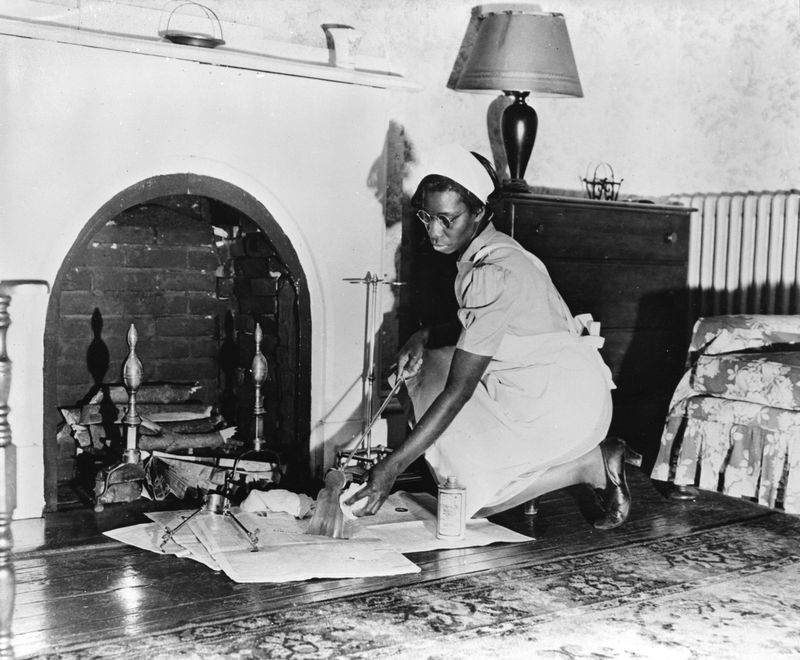
Many homes relied on wood heat, creating the never-ending chore of ash removal. Kids armed with small metal shovels would scoop out still-warm ashes, carefully transferring the powdery mess to metal buckets. One wrong move meant a cloud of gray dust coating everything in sight—including the unlucky child.
The real challenge came in not breathing in the fine particles while trying to remove every last bit from corners and crevices. Parents expected this dirty job completed without complaint, often before company arrived.
Ashes eventually made their way to garden beds as fertilizer or were mixed with sand for icy walkways in winter—nothing went to waste in the resourceful ’60s household.
6. Washing the Family Car by Hand—Every Weekend
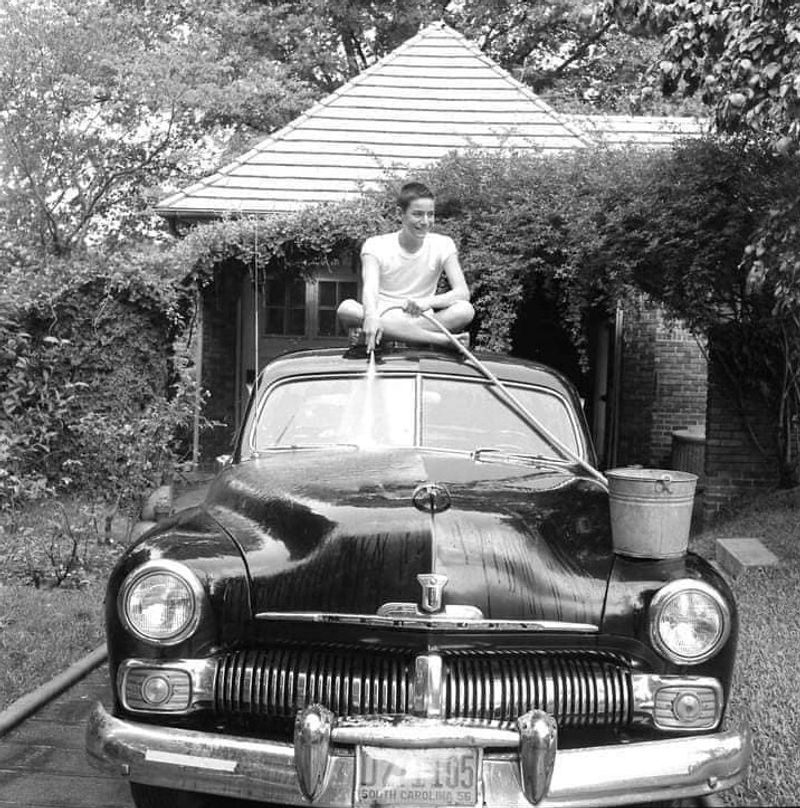
Car pride ran deep in the ’60s, and keeping that Chevy or Ford gleaming fell squarely on young shoulders. Armed with buckets, soap, and rags, kids spent hours scrubbing chrome bumpers and whitewalls to perfection. No automatic car washes here—just elbow grease and determination.
The ritual typically happened in driveways regardless of weather. In summer, it became a welcome splash fest; in winter, fingers numbed as water froze almost instantly on contact with the cold metal. Dad inspected the final result with military precision, sending kids back to rewash spots they missed.
The toughest part? Reaching the roof without scratching the paint or standing on bumpers that weren’t meant to hold a child’s weight.
7. Polishing Shoes for School and Church

Sunday mornings began with the distinct smell of shoe polish as children prepared footwear for the entire family. Tiny hands worked black or brown wax into leather, buffing until shoes reflected like mirrors. Mastering the technique took practice—too much polish created a gunky mess; too little left shoes looking dull.
Kids learned to apply polish with old rags, working it into the leather with circular motions before switching to a clean cloth for the final shine. The worst part? Getting polish under fingernails where it remained stubbornly for days.
Saddle shoes required special attention with different colors for different sections, making this seemingly simple chore surprisingly technical for young shoe-shiners.
8. Peeling Mountains of Vegetables for Dinner
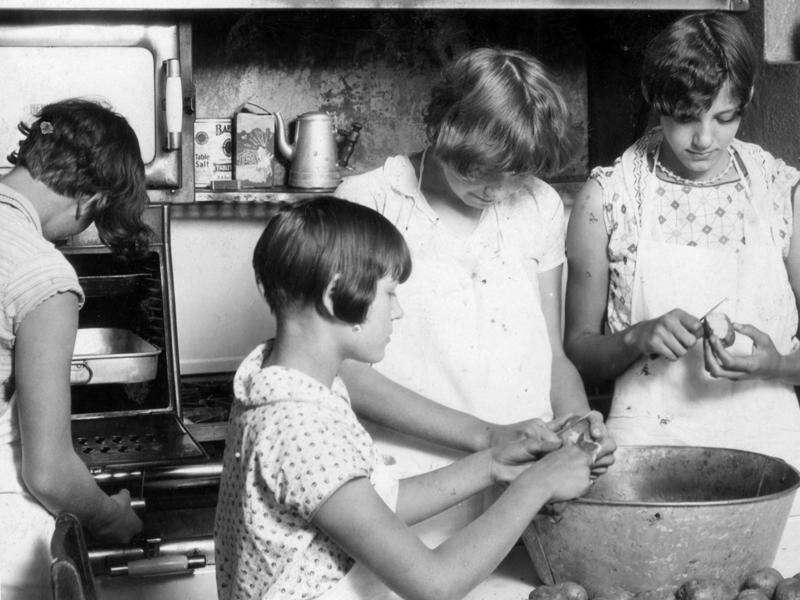
Families were larger in the ’60s, and meals were made from scratch. Children often found themselves stationed at the sink with a paring knife and a mountain of potatoes, carrots, or apples waiting to be peeled. No fancy vegetable peelers—just a sharp knife and steady hands.
Kids learned to peel away from their bodies, creating long spirals of skin while trying to waste as little of the vegetable as possible. Nicked fingers were common but rarely earned much sympathy. After all, dinner for seven couldn’t prepare itself!
The real challenge came during holidays when the vegetable mountains grew to small hills, requiring hours of peeling before the actual cooking could even begin.
9. Scrubbing Floors—On Their Knees
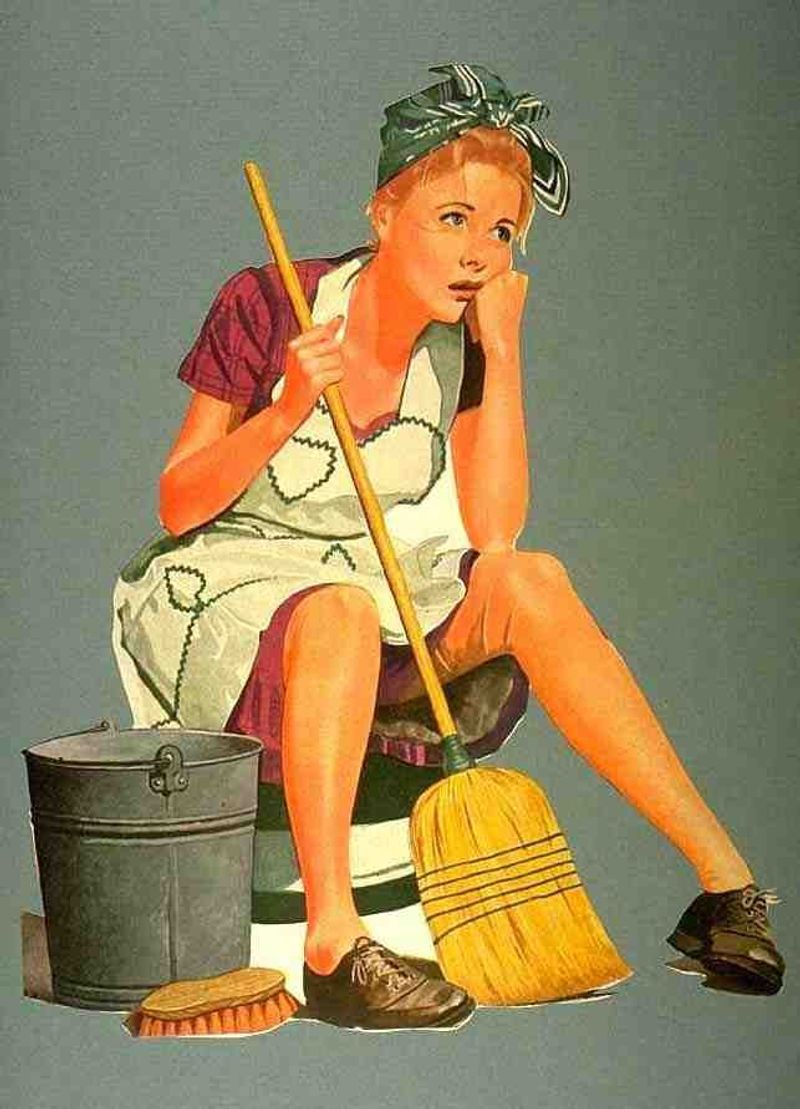
Long before Swiffers and steam mops, floor cleaning meant getting down on hands and knees with a scrub brush and bucket. Children tackled kitchen linoleum and bathroom tile this way every Saturday morning, working section by section across vast floor spaces. The process was painfully manual—scrub with soapy water, rinse with clean water, dry with rags.
Knees grew red and sore despite folded towels used as makeshift kneepads. Kids learned to test their work by running a finger across supposedly clean sections, revealing missed spots that required another round of scrubbing.
The most dreaded areas? Corners and edges where dirt mysteriously accumulated despite regular cleaning efforts.
10. Babysitting Siblings (for Hours)
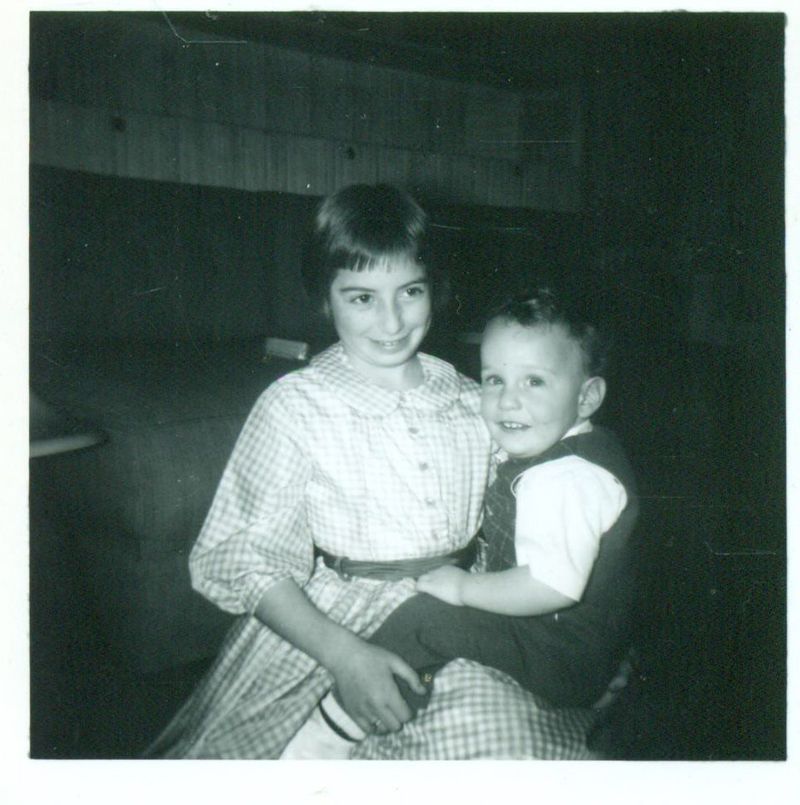
Parents in the ’60s thought nothing of leaving a 10-year-old in charge of younger siblings for entire afternoons or evenings. These young caregivers managed everything from meal preparation to dispute resolution with zero adult supervision and no cell phones for emergency contact.
Older children changed diapers, bandaged scraped knees, and enforced bedtimes with authority beyond their years. The responsibility was enormous—keeping multiple children safe while maintaining household order.
Unlike modern babysitters with Netflix and iPads to entertain charges, these kid-sitters relied on board games, outdoor play, and creativity to keep siblings occupied. Many parents simply left with instructions to “be home before dark” and expected everything to be fine upon return.
11. Walking to the Store Alone to Pick Up Groceries

When mom realized she was missing an ingredient for dinner, she’d hand her 8-year-old some cash and a shopping list. Children regularly walked several blocks alone to corner markets, navigating traffic and carrying groceries home without adult supervision.
Kids memorized prices, counted change, and made important decisions when items were out of stock. The responsibility built confidence but would horrify today’s helicopter parents. Most impressive? Children as young as six knew exactly how much change to expect back from their purchases.
The greatest challenge came with fragile items like eggs or glass bottles of milk that required careful handling on the journey home. Dropping these precious cargo items meant facing mom’s disappointment and possibly going without that night’s planned dinner.
12. Cleaning the Bathroom—To Sparkling Standards

Armed with powdered cleanser and a scrub brush, children tackled porcelain surfaces with remarkable thoroughness. Toilet cleaning wasn’t considered too gross or dangerous for kids, who routinely handled harsh chemicals like bleach without gloves or ventilation. The standard was perfection—chrome fixtures had to shine and grout lines required toothbrush scrubbing until white again.
Kids learned to test their work by running fingers along surfaces checking for grit or spots. Missing even a small area behind the toilet meant doing the entire job over again.
The most feared bathroom cleaning challenge? Hard water rings in the toilet bowl that required vigorous scrubbing and sometimes overnight soaking with vinegar to remove completely.
13. Making Dinner When Mom Was Working Late

As more mothers entered the workforce in the ’60s, older children stepped up as family chefs. Kids as young as 11 prepared complete meals—not just sandwiches but meat, vegetables, and desserts—for entire families. These young cooks managed hot stoves, sharp knives, and complex timing without supervision or microwave shortcuts.
Children followed handwritten recipe cards or simply recreated dishes they’d watched mom prepare dozens of times. The pressure was real—hungry siblings and tired parents counted on these meals being edible and on time.
Many kids mastered impressive dishes like meatloaf, fried chicken, or spaghetti with homemade sauce, skills that would serve them well later in life but represented serious responsibility for elementary-aged children.
14. Manually Defrosting the Fridge

Before self-defrosting refrigerators, ice buildup required regular manual removal. Kids tackled this messy job armed with pans of hot water, towels, and butter knives for chipping away stubborn ice. The process began by emptying the entire freezer contents into coolers or sink filled with ice.
Children placed towels around the freezer base to catch inevitable floods while carefully chipping away ice without puncturing the cooling lines hidden beneath. One wrong move could destroy the appliance entirely.
The job often took hours as kids alternated between scraping and applying hot water to speed melting. The reward for this tedious work? Finding forgotten popsicles or ice cream buried under months of accumulated frost—small treasures that made the chore somewhat worthwhile.

Comments
Loading…